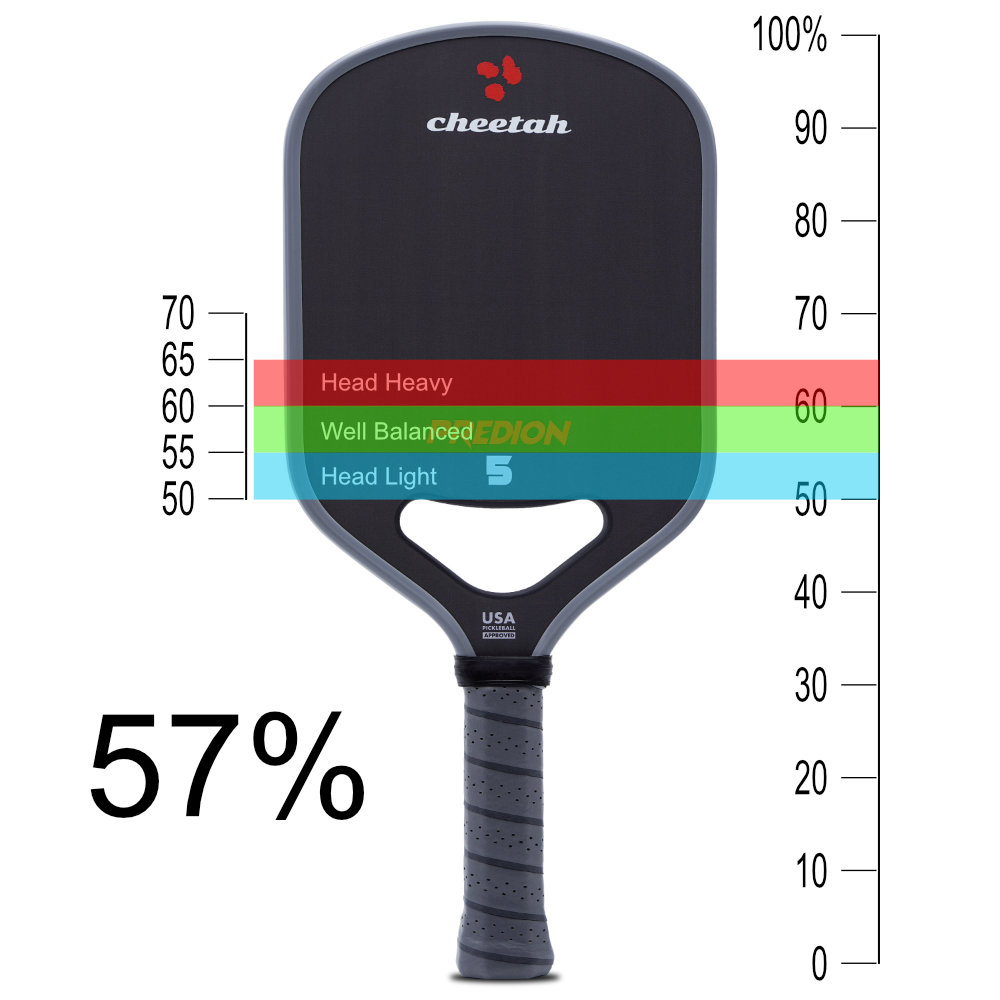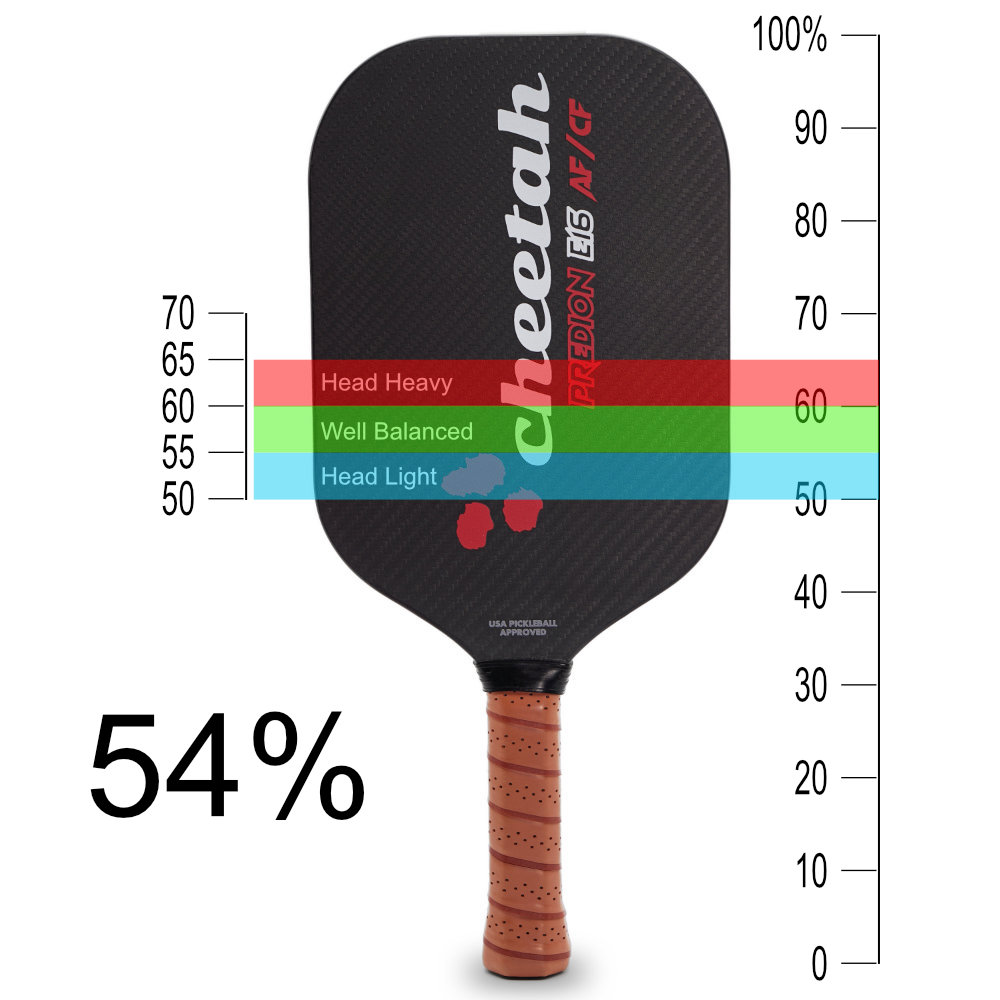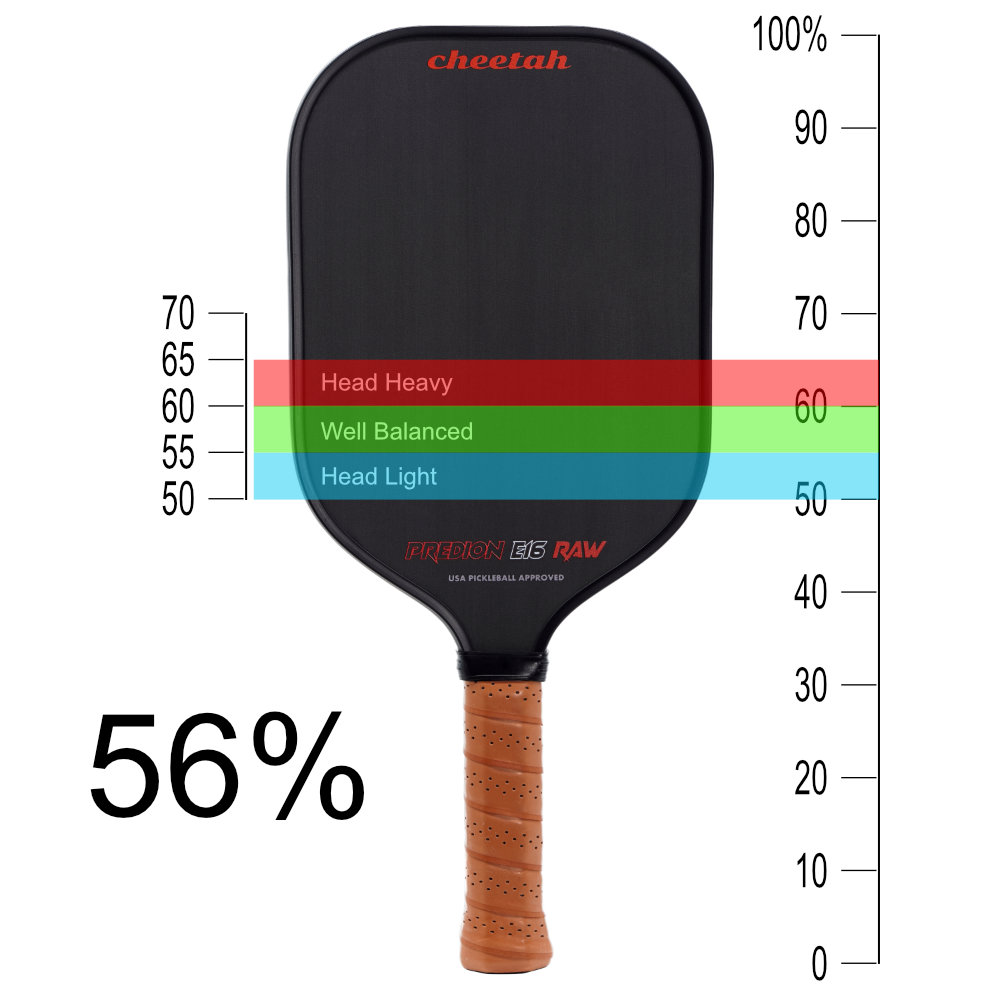Pickleball paddles usually have a static weight between 7 to 9 ounces. This is what they weigh when just sitting on a scale.
But when you pick up a paddle that has a static weight of 8.5 ounces and one that has a static weight of 8.0 ounces, the lighter paddle can actually feel heavier in your hand.
Why?
Because the lighter paddle has more of its weight toward the tip of the paddle and away from the handle. So holding the paddle by the handle can make it feel heavier.
This can also be expressed as swing weight. The higher the swing weight, the more head heavy a paddle feels.
Knowing the swing weight of a paddle is great, but you have to have a special machine to determine it. And most paddle manufacturers don’t provide the paddle swing weight metric. There’s also no unit of measure used. It’s just a number.
So, unless you know the swing weight of every other paddle, it’s hard to compare and not as descriptive as paddle balance on its own.
That’s why we’re including the paddle balance metric for all our paddles.

Measuring Paddle Balance
You can easily measure the paddle balance of any paddle without any special tools or machines. All you need is something to balance your paddle on, like a table, and a measuring device, like a ruler or a measuring tape.
Just measure your paddle’s total length. Let’s say it’s 16 inches long. Then lay the head of the paddle on a table with the handle hanging over the edge. Then move the paddle to where it’s just about to tip off the table, where the edge of the table is the fulcrum or balancing point.
Now measure from the end of the handle to the edge of the table. Let’s say it’s 8 inches.
Now divide that distance by the total length of the paddle. In our example, it would be 8 inches divided by 16 inches. The balance point would then be .5 or 50%, meaning that the paddle is perfectly balanced.
To my knowledge, all pickleball paddles have a greater than 50% balance point. But just knowing that 50% is the perfect balancing point, you can determine how Head Light, Well Balanced or Head Heavy a paddle feels.
And there is no ideal balance point. It all depends on the player’s style of play.
Some players like Head Light paddles that are very easy to maneuver. They may have less force, but that can be made up for with increased paddle speed. Some players like Head Heavy paddles that provide better plow through force, but are harder to maneuver. And some players like Well Balanced paddles that are in between.
Paddle Balance Ranges
There is no official standard range for balance point measurements. So we established our own. You may see other ranges out there. But just know that the higher the percentage above 50%, the more Head Heavy a paddle will feel. The ranges we use are in the table below.
Our paddles are in the Head Light and Well Balanced range, with the Predion E16 AF/CF providing you with the most agility, the Predion 5 providing you with the greatest plow through rate and the Predion E16 Raw being somewhere in between. You can click on the images in the table to learn more about each paddle.


